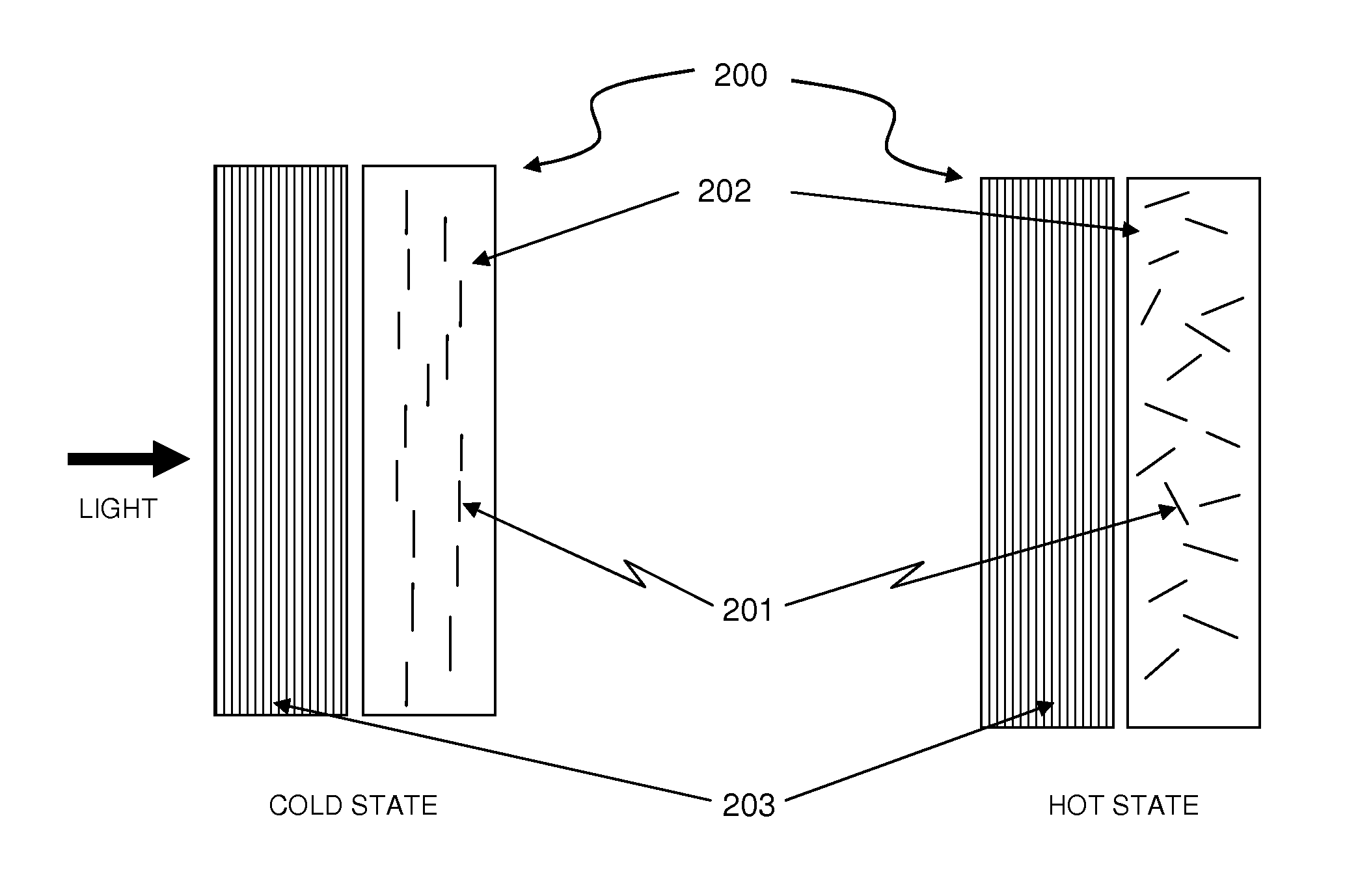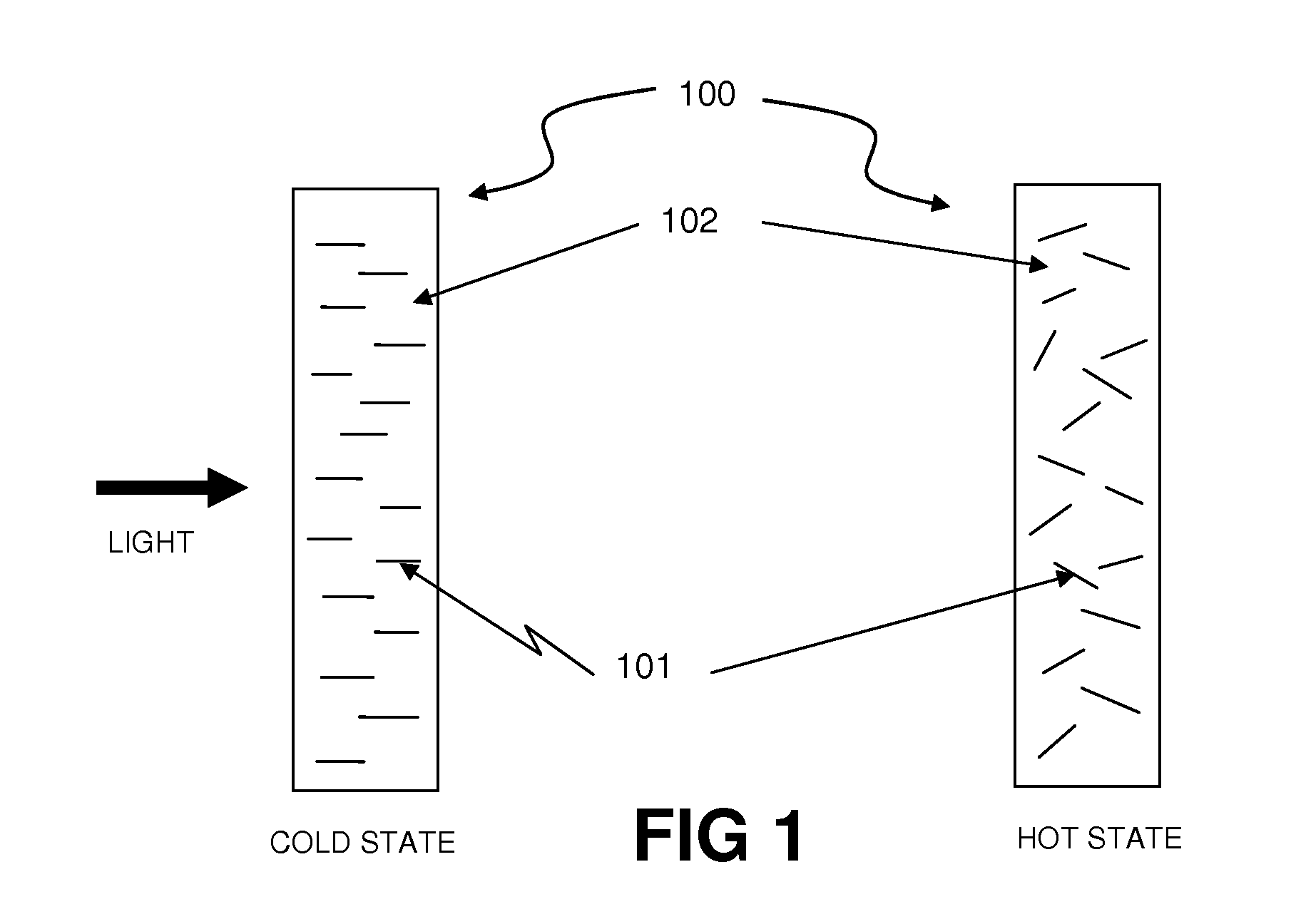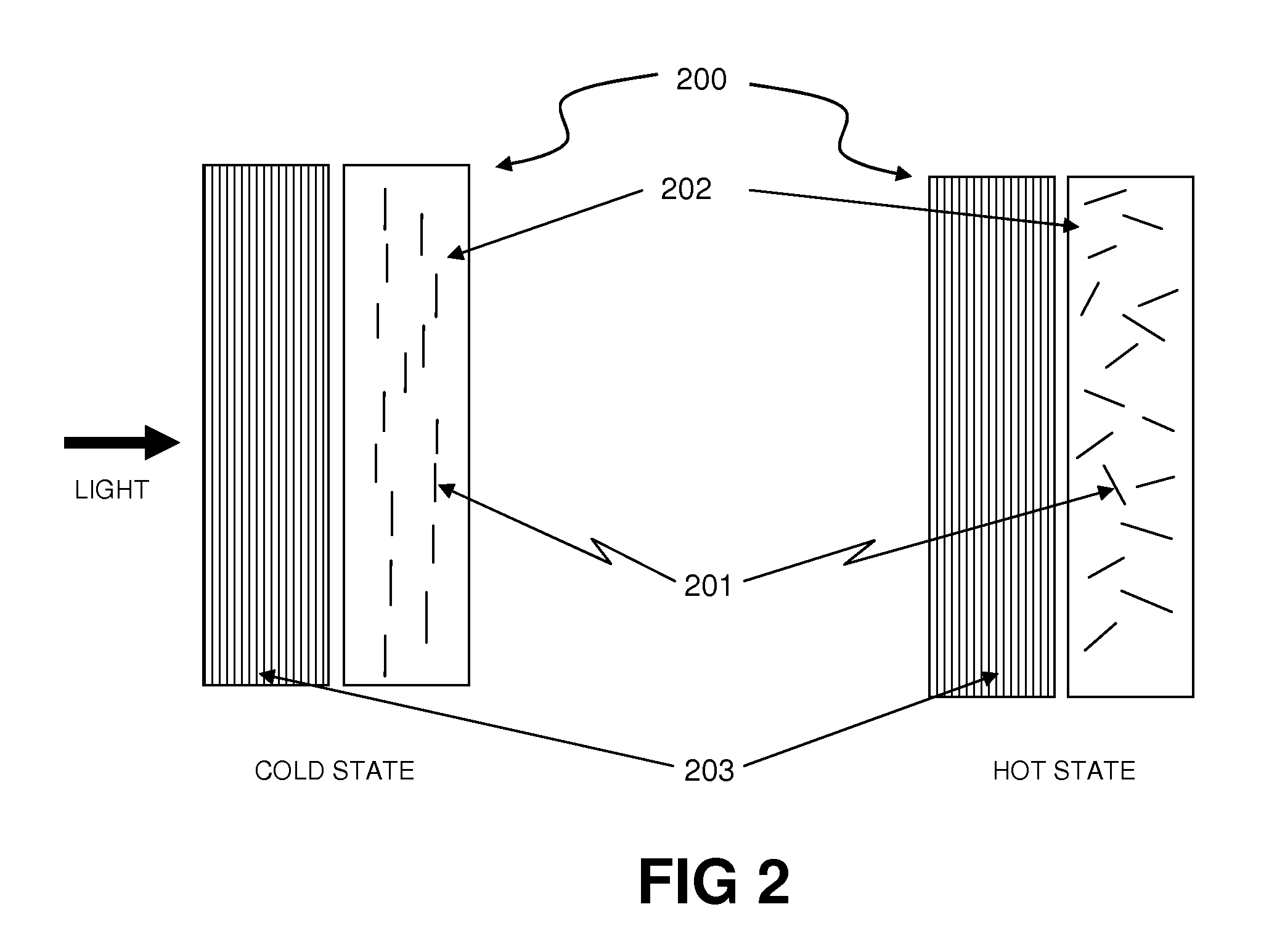Thermally switched optical filter incorporating a guest-host architecture
a technology of optical filter and guest host, which is applied in the direction of static indicating device, door/window protective device, instruments, etc., can solve the problems of limited switching speed and cycle life, and the amount of light transmitted through the device may therefore change as well, so as to achieve privacy, glare or solar heat gain.
- Summary
- Abstract
- Description
- Claims
- Application Information
AI Technical Summary
Benefits of technology
Problems solved by technology
Method used
Image
Examples
Embodiment Construction
[0022]For the purposes of this specification, the term “thermoreflective” shall refer to any object, device, or material having a reflectivity that varies as a function of temperature. Similarly, “thermoabsorptive” and “thermoflourescent” shall refer to any objects, devices, or materials having an absoptivity or fluorescence, respectively, that varies as a function of temperature. Since light transmission is a function of reflection, absorption, and re-radiation of light, any of these objects, devices, or materials may also be properly described by the more generic term, “thermochromic”.
[0023]FIG. 1 is a schematic, cross-section view of an exemplary form of a thermochromic filter device 100. The filter device 100 may be composed of included “orientation dependent colorant” or ODC materials 101 inside a transmissive, thermotropic, order-providing carrier material 102. At a lower temperature, assuming that the ODC molecules interact more strongly with incoming light perpendicular to t...
PUM
| Property | Measurement | Unit |
|---|---|---|
| boiling point | aaaaa | aaaaa |
| freezing point | aaaaa | aaaaa |
| freezing point | aaaaa | aaaaa |
Abstract
Description
Claims
Application Information
 Login to View More
Login to View More - R&D
- Intellectual Property
- Life Sciences
- Materials
- Tech Scout
- Unparalleled Data Quality
- Higher Quality Content
- 60% Fewer Hallucinations
Browse by: Latest US Patents, China's latest patents, Technical Efficacy Thesaurus, Application Domain, Technology Topic, Popular Technical Reports.
© 2025 PatSnap. All rights reserved.Legal|Privacy policy|Modern Slavery Act Transparency Statement|Sitemap|About US| Contact US: help@patsnap.com



